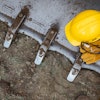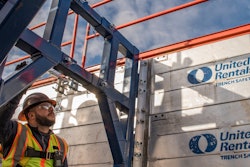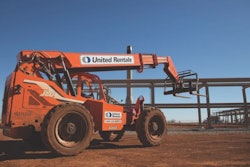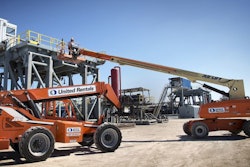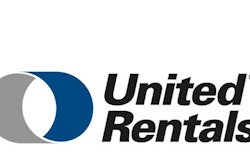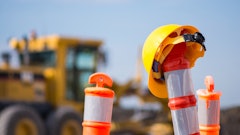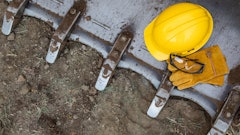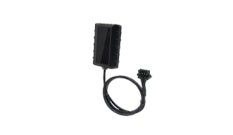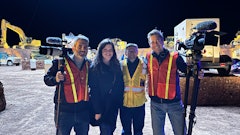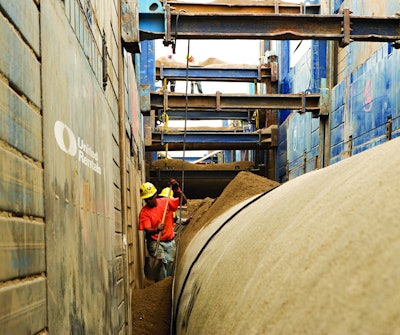
Trench and excavation operations are among the most dangerous jobs in the construction and utility industries. While most trench fatalities happen in unprotected trenches, studies estimate that 24% occur when sloping, benching, shielding or shoring is used improperly. In these tragic incidents, OSHA tables and charts for sloping, benching, timber shoring or manufactured systems with tabulated data using shields or shoring are not being followed.
Trench shoring and protection systems can be used at worksites to help keep workers safe and protected from cave-ins. These systems come with manufacturers’ tabulated data that typically consists of tables, charts and other information created by a registered professional engineer. The tab data guides companies in choosing, assembling and installing a trench protective system. OSHA regulations require companies have a competent person at every excavation in charge of overseeing all aspects of the excavation, including inspecting trenches and identifying potential hazards.
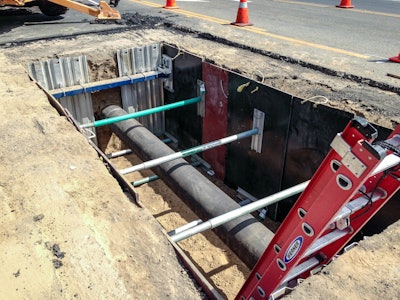 Manufacturer’s tabulated data contains charts and tables that dictate whether a protective system can be used at certain depths and under certain conditions.United Rentals
Manufacturer’s tabulated data contains charts and tables that dictate whether a protective system can be used at certain depths and under certain conditions.United Rentals
How to Use Tabulated Data
United Rentals has more than 92 trench safety locations and the largest fleet of shoring and underground excavation rental equipment in North America. It has developed the following four tips for using a manufacturer’s tabulated data properly with a trench protective system to help contractors and utilities promote safe work practices in trenching and excavation operations.
1. Follow depth ratings. Manufacturer’s tabulated data contains charts and tables that dictate whether a protective system can be used at certain depths and under certain conditions. OSHA does not allow contractors to use a system outside of these parameters unless there was prior approval from the manufacturer or a registered professional engineer approved that usage in writing.
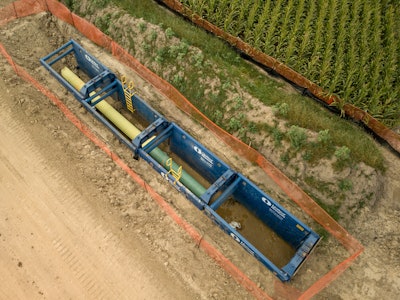 Manufacturer’s tabulated data must be kept on the jobsite during construction because conditions can change quickly.United Rentals
Manufacturer’s tabulated data must be kept on the jobsite during construction because conditions can change quickly.United Rentals
3. Know similar systems are not the same. A lack of industry-wide standards means even for the same type of protective system, tabulated data will differ among manufacturers. The competent person must review tabulated data for each system considering factors such as:
- Surcharge loads
- Allowances for soil types
- Dewatering limits
- Limitations on depths with vertically sided lower portions
- Time limitations on use of the system
4. Account for changing conditions. Manufacturer’s tabulated data must be kept on the jobsite during construction because conditions can change quickly. A sudden downpour, for example, may affect soil conditions or flood the trench. After such an event, and on a daily basis, the competent person must conduct inspections of the site and refer to the tab data to ensure use of the protective system still falls within the limits of safe operation. These checks are also needed when the trench becomes wider or deeper, when more pipe clearance is needed and when the contractor is using a shield and sloping out the sides of the trench.
“Understanding and following all the requirements spelled out in tabulated data takes time and effort. As a best practice, teams should consult experts before beginning a trench or excavation project. It’s the competent person’s responsibility and duty to have every worker climb out of the trench at the end of each day and return home unharmed,” says Wise.


